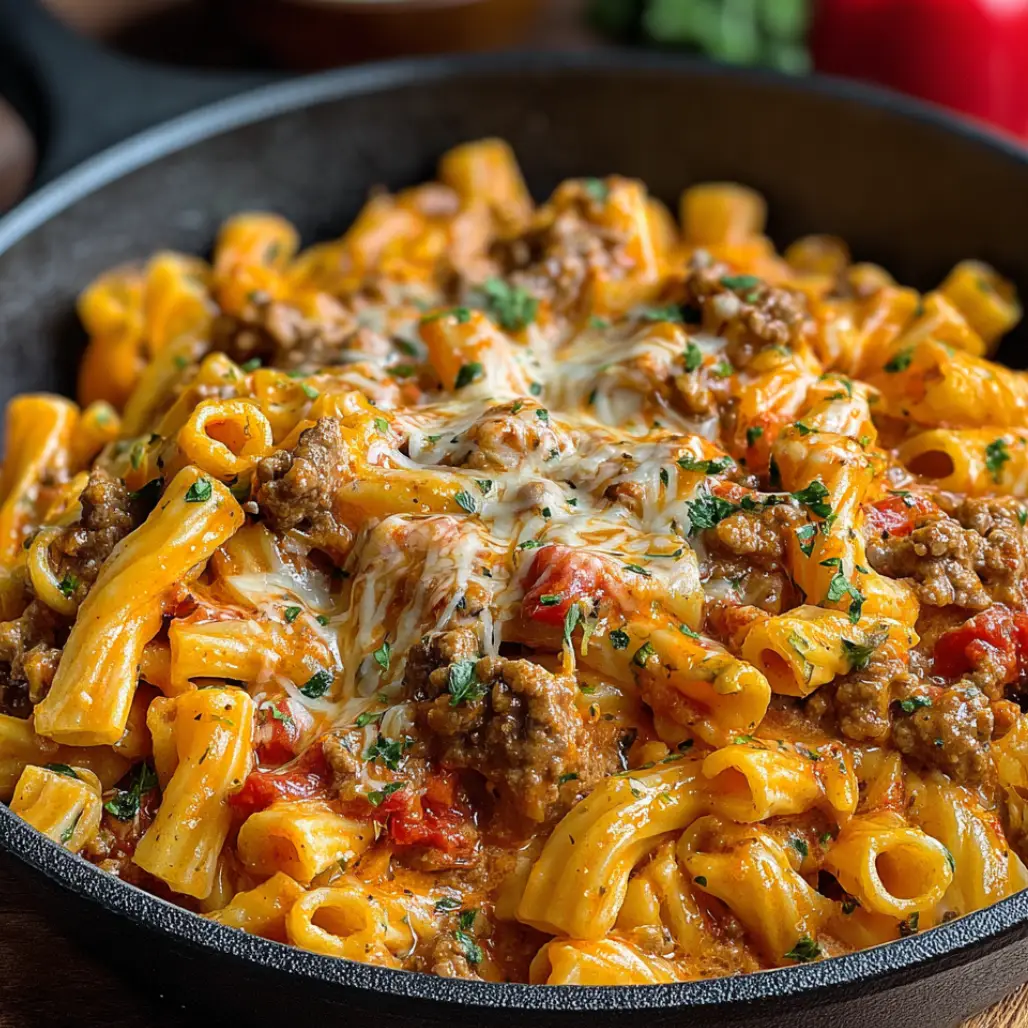| Prep Time: 20 minutes | Cook Time: 15 minutes | Total Time: 35 minutes | Serves: 6 |
|---|
The magic of homemade cheesy pizza pockets transcends ordinary snacking because these golden bundles of joy combine the beloved flavors of pizza with the convenience of handheld comfort food. When you bite into a perfectly baked pocket, the crispy exterior gives way to an explosion of melted cheese, savory sauce, and your favorite pizza toppings all wrapped in tender, homemade dough that creates an unforgettable culinary experience.
Why These Homemade Cheesy Pizza Pockets Are Simply Irresistible
The beauty of homemade cheesy pizza pockets lies in their versatility and nostalgic appeal because they transport you back to childhood memories while offering endless customization possibilities. These delightful pockets satisfy your pizza cravings without the need for plates or utensils, making them perfect for busy weeknights, game day gatherings, or whenever you want comfort food that delivers both convenience and flavor.
Creating homemade cheesy pizza pockets from scratch allows you to control every ingredient because you choose the quality of cheese, the type of sauce, and the freshness of your fillings. The process of making the dough, rolling it out, and carefully sealing each pocket becomes a therapeutic cooking experience that connects you with the traditional art of bread making while producing results that far surpass any store-bought alternative.
The incredible aroma that fills your kitchen during baking creates anticipation that builds with every passing minute because the combination of yeast-risen dough, bubbling cheese, and aromatic herbs signals that something truly special is happening in your oven. These homemade cheesy pizza pockets offer the perfect balance of crispy texture and gooey interior that makes each bite a celebration of flavors working in harmony.
Essential Ingredients for Perfect Pizza Pockets
For the Homemade Dough:
- 2 cups all-purpose flour – provides the perfect structure and chewiness
- 1 teaspoon active dry yeast – creates the light, airy texture
- 1 teaspoon salt – enhances all the flavors in the dough
- 1 teaspoon sugar – feeds the yeast and adds subtle sweetness
- 3/4 cup warm water – activates the yeast and brings the dough together
- 2 tablespoons olive oil – adds richness and helps with texture
For the Delicious Filling:
- 2 cups shredded mozzarella cheese – creates that irresistible cheese pull
- 1/2 cup grated Parmesan cheese – adds depth and sharp flavor
- 1 cup pizza sauce – provides the classic tomato base
- 1/2 cup diced pepperoni – brings that classic pizza flavor
- 1/2 cup diced bell peppers – adds freshness and crunch
- 1/2 cup diced mushrooms – contributes earthy umami notes
- 1 beaten egg – for the golden egg wash
- 1 teaspoon Italian seasoning – enhances the overall flavor profile
The Art of Creating Perfect Homemade Cheesy Pizza Pockets
Mastering homemade cheesy pizza pockets requires understanding the delicate balance between dough consistency, filling proportions, and baking techniques because each element contributes to the final result. The dough should be soft and pliable yet strong enough to hold generous amounts of filling without tearing, while the cheese-to-sauce ratio must create that perfect molten center that makes these pockets so irresistible.
The key to exceptional homemade cheesy pizza pockets lies in proper sealing techniques because poorly sealed edges lead to filling leakage and disappointing results. When you crimp the edges with a fork, you create both a functional seal and an attractive decorative border that shows the care and attention you put into each pocket.
Temperature control plays a crucial role in achieving perfect homemade cheesy pizza pockets because the oven must be hot enough to create a golden, crispy exterior while ensuring the filling heats through completely. The egg wash not only provides that beautiful glossy finish but also helps the Italian seasoning adhere to the surface, creating visual appeal that matches the incredible taste.
Step-by-Step Instructions for Pizza Pocket Perfection
Preparing the Yeast Dough Foundation
Begin your homemade cheesy pizza pockets journey by combining the warm water with sugar in a large mixing bowl, stirring gently until the sugar dissolves completely because this creates the perfect environment for yeast activation. Sprinkle the active dry yeast over the sweetened water and let it sit for 5-10 minutes until it becomes foamy and bubbly, indicating that your yeast is alive and ready to work its magic.
Professional Tip: The water temperature should feel comfortably warm to your wrist, similar to a baby’s bath water, because water that is too hot will kill the yeast while water that is too cool won’t activate it properly.
Key Points: Watch for the foam formation on top of the water, which signals successful yeast activation, and ensure your measuring cup is clean because any soap residue can interfere with yeast development.
Add the flour, salt, and olive oil to the activated yeast mixture, stirring with a wooden spoon until a shaggy dough forms because this initial mixing incorporates the ingredients without overworking the gluten. Turn the dough onto a lightly floured surface and knead for 8-10 minutes until it becomes smooth, elastic, and slightly tacky to the touch, developing the gluten structure that will give your homemade cheesy pizza pockets their perfect texture.
Professional Tip: Proper kneading develops gluten strands that create the dough’s strength and elasticity, so don’t rush this process because well-kneaded dough will hold fillings better and create a superior final product.
Key Points: The dough should spring back when poked gently with your finger, and you should be able to stretch a small piece thin enough to see light through it without tearing, indicating proper gluten development.
Creating the Perfect Filling Mixture
While your dough rises in a greased bowl covered with a damp towel, prepare the filling by combining the shredded mozzarella, grated Parmesan, diced pepperoni, bell peppers, and mushrooms in a large bowl because pre-mixing ensures even distribution of ingredients in each pocket. The cheese should be at room temperature to help it melt evenly during baking, while the vegetables should be patted dry to prevent excess moisture from making the dough soggy.
Professional Tip: Room temperature cheese melts more uniformly than cold cheese, creating that perfect gooey center that makes homemade cheesy pizza pockets so irresistible, so remove your cheese from the refrigerator about 30 minutes before assembly.
Key Points: Dice all ingredients to similar sizes for consistent filling distribution, and avoid overfilling each pocket because too much filling will cause the seams to burst during baking.
Rolling and Assembling Your Pizza Pockets
Once your dough has doubled in size after about 1 hour of rising, punch it down gently to release the air bubbles and turn it onto a lightly floured surface because this deflation prepares the dough for rolling without creating tough pockets. Divide the dough into six equal portions using a knife or bench scraper, shaping each piece into a ball before rolling them into rectangles approximately 6 inches by 4 inches because uniform size ensures even baking.
Professional Tip: Roll from the center outward in all directions to create even thickness throughout each rectangle, and dust your rolling pin with flour as needed to prevent sticking because consistent thickness prevents thin spots that might tear during filling.
Key Points: Keep unused dough portions covered with a damp towel to prevent surface drying, and roll each piece just before filling to maintain optimal texture and workability.
Spread 2-3 tablespoons of pizza sauce on one half of each rectangle, leaving a 1/2-inch border around the edges because this space is crucial for proper sealing. Add approximately 1/3 cup of the cheese and vegetable mixture on top of the sauce, distributing it evenly without overpacking because compressed filling doesn’t heat through properly and can cause uneven cooking.
Professional Tip: Keep the filling away from the edges because any sauce or cheese on the sealing area will prevent proper adhesion and lead to opened pockets during baking, ruining your homemade cheesy pizza pockets.
Key Points: Use a light hand when spreading sauce to avoid tearing the dough, and ensure filling distribution is even to prevent some bites from being bland while others are overpowering.
Sealing and Finishing Your Pizza Pockets
Fold the empty half of each rectangle over the filled portion, aligning the edges carefully because proper alignment ensures even sealing all around the perimeter. Press the edges together firmly with your fingers, then use a fork to crimp around the entire perimeter because this double-sealing method prevents any filling from escaping during the baking process.
Professional Tip: Slightly dampen the edges with water using a pastry brush before sealing because moisture helps create a stronger bond between the dough layers, ensuring your homemade cheesy pizza pockets stay sealed throughout baking.
Key Points: Press out any air bubbles from inside the pockets before final sealing because trapped air can cause the pockets to puff up excessively and potentially burst, and make sure the fork tines penetrate through both layers of dough for secure crimping.
Brush each pocket with beaten egg and sprinkle with Italian seasoning because the egg wash creates that beautiful golden color while helping the herbs adhere to the surface. Place the finished pockets on a parchment-lined baking sheet with at least 2 inches between each one because they will expand slightly during baking and need room to brown evenly.
Professional Tip: Use a pastry brush for even egg wash application because this tool distributes the egg more uniformly than other methods, creating consistent color across all your homemade cheesy pizza pockets.
Key Points: Apply egg wash in thin, even coats to avoid pooling, and add herbs immediately after brushing while the egg is still wet to ensure proper adherence.
Professional Tips for Pizza Pocket Success
Achieving perfect homemade cheesy pizza pockets requires attention to detail at every stage because small mistakes can significantly impact the final result. Always use fresh, high-quality ingredients because the flavor of your pockets depends entirely on the quality of what goes into them, and never skip the rising time because properly developed dough creates the ideal texture that makes these pockets special.
Temperature control throughout the process ensures optimal results because warm environments help with rising while proper oven temperature creates the perfect crust. Consider investing in an oven thermometer because many home ovens run hot or cold, and accurate temperature is crucial for achieving that golden-brown exterior while ensuring the filling reaches safe internal temperatures.
The timing of assembly matters greatly because working with dough at the right stage of development creates easier handling and better results. Don’t rush the process because each step builds upon the previous one, and patience during rising and baking will reward you with homemade cheesy pizza pockets that exceed your expectations.
Creative Variations to Explore
Transform your homemade cheesy pizza pockets into exciting new flavors by experimenting with different filling combinations because the basic dough recipe serves as a perfect foundation for countless variations. Try a breakfast version using scrambled eggs, crispy bacon, and cheddar cheese for a morning treat that pairs beautifully with breakfast favorites to create a complete morning feast that will satisfy even the heartiest appetites.
Create Mediterranean-inspired pockets using feta cheese, sun-dried tomatoes, spinach, and olives because these ingredients transport your taste buds to coastal Italy while maintaining the comforting appeal of the original recipe. For spice lovers, add jalapeños, pepper jack cheese, and spicy Italian sausage because the heat level can be adjusted to your preference while the cooling effect of cheese balances the spiciness perfectly.
Dessert versions of homemade cheesy pizza pockets work surprisingly well using sweet fillings like Nutella and banana, cinnamon sugar and cream cheese, or even apple pie filling with vanilla icing drizzle because the same dough technique adapts beautifully to sweet applications that complement dessert recipes for a complete dessert spread.
Perfect Pairing Ideas for Your Pizza Pockets
Complement your homemade cheesy pizza pockets with fresh salads that provide textural contrast and help balance the richness of the cheese-filled pockets because crisp greens and light vinaigrettes cleanse the palate between bites. Explore fresh salad options to find the perfect accompaniment that enhances rather than competes with your main dish.
Savory side dishes elevate the entire meal because they add variety and create a more complete dining experience. Consider pairing with savory sides or perfect sides because these combinations create restaurant-quality meals in your own home while providing options for different dietary preferences and flavor profiles.
Dipping sauces transform homemade cheesy pizza pockets into an interactive eating experience because the variety of flavors keeps every bite interesting. Ranch dressing, marinara sauce, garlic aioli, or spicy buffalo sauce all work wonderfully, and you can find inspiration from flavored dips and marinades to create homemade versions that perfectly complement your pockets.
For a complete meal experience, consider adding refreshing beverages because the right drink enhances the overall experience while cleansing the palate between bites. These combinations create restaurant-quality meals in your own home while providing options for different dietary preferences and flavor profiles.
Discover More Delicious Recipes
Expand your culinary horizons beyond homemade cheesy pizza pockets by exploring similar handheld favorites that use comparable techniques and ingredients because mastering one leads naturally to success with others. Hand pies, empanadas, and calzones all share similar construction methods while offering different flavor profiles and cultural influences that keep your cooking adventures exciting and diverse.
The versatility of pocket-style foods makes them perfect for meal planning because they can be prepared ahead, frozen for later use, and customized to accommodate different dietary needs and preferences. Whether you’re hosting a party, packing lunches, or simply wanting comfort food, these types of recipes provide practical solutions that don’t sacrifice flavor or satisfaction.
Building your repertoire of stuffed bread recipes creates a foundation for countless meal possibilities because the basic techniques transfer across different cuisines and applications. From sweet to savory, simple to complex, pocket-style foods offer endless opportunities for creativity while maintaining the comforting appeal that makes homemade cheesy pizza pockets so beloved.
Storage Guidelines and Reheating Tips
Proper storage of homemade cheesy pizza pockets ensures you can enjoy them for several days after baking because correct techniques maintain both safety and quality. Allow pockets to cool completely before storing them in airtight containers in the refrigerator for up to four days, and never store them while still warm because trapped steam creates moisture that makes the crust soggy.
For longer storage, freeze your homemade cheesy pizza pockets by placing cooled pockets on a baking sheet until frozen solid, then transferring to freezer bags with dates marked clearly because this method prevents them from sticking together while maintaining quality for up to three months. Remove as much air as possible from freezer bags because air exposure leads to freezer burn that affects both taste and texture.
Reheating techniques can make or break leftover homemade cheesy pizza pockets because the wrong method results in soggy or dried-out pockets that bear little resemblance to their freshly baked glory. Use a 350°F oven for 8-12 minutes for refrigerated pockets or 15-20 minutes from frozen because oven reheating restores the crispy exterior while heating the filling evenly throughout.
The Science Behind Perfect Pizza Pockets
Understanding the science behind homemade cheesy pizza pockets helps you troubleshoot problems and achieve consistent results because knowledge of how ingredients interact empowers you to make adjustments when needed. Yeast fermentation creates carbon dioxide bubbles that give the dough its light texture, while gluten development from kneading creates the structure that holds everything together during baking and eating.
The Maillard reaction between proteins and sugars creates the golden-brown color and complex flavors that develop during baking because this chemical process transforms simple ingredients into the rich, savory notes that make homemade cheesy pizza pockets so appealing. Proper oven temperature ensures this reaction occurs at the right rate to create color without burning while allowing interior cooking to proceed safely.
Cheese melting behavior affects both texture and flavor because different cheeses melt at different temperatures and rates, which is why the combination of mozzarella and Parmesan works so well together. Mozzarella provides creamy texture and mild flavor while Parmesan adds sharpness and helps create the appealing cheese pull that makes homemade cheesy pizza pockets so photogenic and delicious.
Troubleshooting Common Issues
When homemade cheesy pizza pockets don’t turn out as expected, identifying the cause helps prevent future problems because most issues stem from common mistakes that are easily corrected with proper technique. Soggy bottoms usually result from too much sauce or insufficient oven temperature, while tough crusts indicate over-kneading or using flour with too high protein content.
Filling leakage during baking typically occurs due to inadequate sealing or overfilling because the expansion of ingredients during heating requires proper space and containment. If your pockets consistently open during baking, reduce filling amounts and pay extra attention to edge sealing, ensuring no sauce or cheese interferes with the dough-to-dough contact necessary for proper adhesion.
Uneven browning suggests oven hot spots or incorrect rack positioning because heat distribution varies significantly in most home ovens. Rotate your baking sheet halfway through cooking time and experiment with different rack positions until you find the sweet spot that produces evenly golden homemade cheesy pizza pockets every time.
Additional Inspiration and Recipe Ideas
Elevate your homemade cheesy pizza pockets experience by incorporating techniques and flavors from other cuisines because fusion cooking creates exciting new possibilities while honoring the basic concept that makes these pockets so appealing. Asian-inspired versions using teriyaki chicken, vegetables, and sesame seeds offer completely different flavor profiles while maintaining the handheld convenience that makes them perfect for casual dining.
Create themed variations that match seasonal ingredients because using fresh, in-season produce enhances both flavor and nutritional value while keeping your homemade cheesy pizza pockets interesting throughout the year. Spring versions with fresh herbs and tender vegetables, summer combinations featuring ripe tomatoes and basil, fall pockets with roasted squash and sage, and winter varieties with hearty root vegetables all celebrate seasonal bounty.
Explore international pocket food traditions because learning from global cuisines expands your understanding of how different cultures approach similar concepts. From Cornish pasties to Argentine empanadas, studying these traditions provides inspiration for new filling combinations and techniques that can enhance your homemade cheesy pizza pockets while broadening your culinary knowledge.
Snack and Appetizer Applications
Transform homemade cheesy pizza pockets into elegant appetizers by making smaller versions that work perfectly for parties and gatherings because bite-sized portions allow guests to sample other dishes while enjoying these flavorful treats. Mini pockets require adjusted cooking times and slightly different techniques, but the results are worth the extra effort when you see how impressed your guests become.
Serve alongside other snacks and appetizers to create variety that keeps party-goers interested because offering multiple options accommodates different tastes and dietary restrictions while ensuring everyone finds something they love. The handheld nature of homemade cheesy pizza pockets makes them ideal for standing receptions and casual gatherings where people want to eat while socializing.
Pair with complementary beverages that enhance the rich, cheesy flavors because the right drink enhances the overall experience while cleansing the palate between bites. These combinations create restaurant-quality meals in your own home while providing options for different dietary preferences and flavor profiles.
Conclusion
Creating homemade cheesy pizza pockets represents more than just following a recipe because it connects you with the timeless tradition of comfort food while providing endless opportunities for creativity and personalization. These golden pockets of deliciousness satisfy both practical needs and emotional cravings because they deliver convenience without sacrificing the quality and satisfaction that comes from cooking from scratch.
The journey from mixing simple ingredients to pulling perfectly baked homemade cheesy pizza pockets from your oven creates memories and builds confidence in the kitchen because each successful batch proves that exceptional food doesn’t require complicated techniques or expensive ingredients. Whether you’re feeding hungry family members, impressing dinner guests, or simply treating yourself to something special, these pockets deliver satisfaction that goes far beyond basic sustenance because they represent the love and care that goes into homemade cooking.









